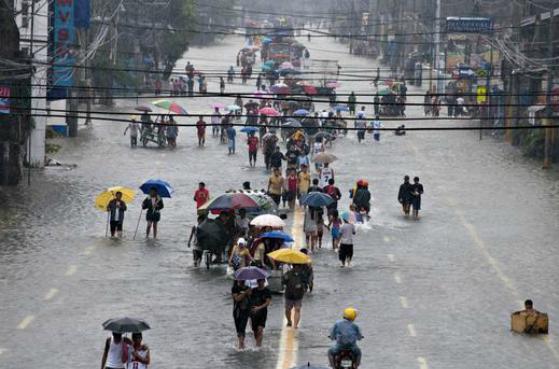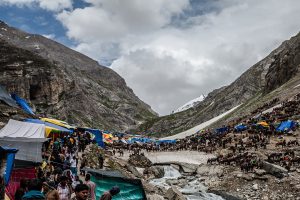Business people talk of issues being on or off the corporate radar, but it’s amazing how often CEOs and other leaders miss important signals in the midst of all the background noise. Part of the explanation is that their radar screens, or market intelligence systems, are so swamped with detail that it is almost impossible to detect weak signals before they go exponential and seriously impact the business.
Companies have long needed help retuning their radar, with a view to spotting signs of impending big changes sooner. And the task will become even more important as globalisation evolves, shaped by the rapidly growing power of social media to uncover and punish real or perceived corporate wrongdoing.
Command centres are essential if you want to manage a complex, global empire, as thousands of companies now must. That reality was underscored when I visited Nestlé’s Vevey headquarters in Switzerland last month. We were taken around a monitoring centre where a dozen talented young people from different parts of “Planet Nestlé” track worldwide online commentary, in real-time, on the giant food company’s brands. As visual representations of online conversations swelled and faded on the screens, a young Argentinian woman explained which online conversations were going viral, and why.
Over time, growing numbers of companies will have little option but to gain access to similar market monitoring systems.
There is another, lower tech way to tap into market trends – to bring in people closely involved in monitoring and shaping the emerging agenda. Someone who had flown in earlier in the day to help us stretch Nestlé’s thinking was Peter Bakker, the new president of the World Business Council for Sustainable Development (WBCSD).
WBCSD published its ambitious Vision 2050 a few years back, suggesting a clear set of stretch goals for business leadership, and envisioning a world in which 9-plus billion people by mid-century are all living well, within planetary boundaries. But short-term pressures, aggravated by the economic downturn, are stalling progress. To turn up the heat, Bakker has decided to stress test the Vision 2050 trajectories against the nine planetary boundaries identified by the Stockholm Resilience Centre.
Business the only force "able to crack" climate change
The world, Bakker warns, is “on fire” – and the lack of real progress to date “scary”. So far, he says, it has been more a matter of nice words than real-world action. He notes that the International Energy Agency (IEA) predicts that the additional coal-fired power plants due for construction by 2017 will lock us into an inconceivable five-degree global warming trajectory.
On current evidence, governments won’t sort this out for us. “Business,” Bakker insists, “is now the only force with the ability to crack this.” But business must act now, developing solutions at scale; it must work even harder to switch on governments to the challenges and opportunities; and – above all – it must work on changing the rules of the market game. So instead of trying to work with all countries at the same time, WBCSD plans to prioritise initiatives with leading edge countries and, a particular priority, cities.
To help business leaders get a better sense of what will be required of them, my organisation Volans has started to suggest the use of zero targets to stretch their horizons and ambitions. When I originally suggested a “zero workshop” to Nestlé, I worried it would be too much of a stretch for the world’s largest food company. Instead, I discovered that their chief operating officer, José Lopez, had spent years working in Japan, and had emerged totally persuaded by the “power of zero” – which sits at the heart of Japanese approaches to total quality and lean production. He promptly offered to co-host the first workshop.
The session proved to be quite an eye-opener, with participants presenting a series of “towards zero”, “net zero”, “zero” or “beyond zero” targeted projects from across the company. Nestlé’s York factory, for example, has achieved zero waste to landfill. Then there is the “excellence diamond”, a management tool with five facets – safety, environment, quality and delivery – each clearly linked with zero targets. This approach was actually inspired by airlines, which have very successfully targeted zero accidents. Piloted in a number of plants, the diamond approach is now being rolled out to all 400-plus Nestlé sites.
Zero water for milk factories
Another initiative was “ZerEau”, designed to wean milk factories off water completely, by exploiting the water contained in the raw milk delivered to the Nestlé sites. “Why the hell do we need water in a milk factory?” the lead engineer had wondered after his Eureka moment: “88% of milk is water!” Now the aim is to achieve a positive water impact, not simply to reduce groundwater demand to zero.
While the weight of evidence on climate change and impending natural resource constraints continues to build, it is great to see a small but growing band of leading chief executives speaking up about the need for radical change – and calling on governments to play their part.
Expect to hear more of the term “market revolutionaries”. To achieve WBCSD’s mid-century goals, we must revolutionise economics, revolutionise accounting and revolutionise our legal and international governance systems. Like it or not, this is going to be hard, demanding work.


